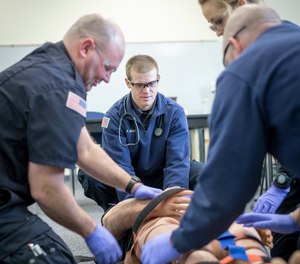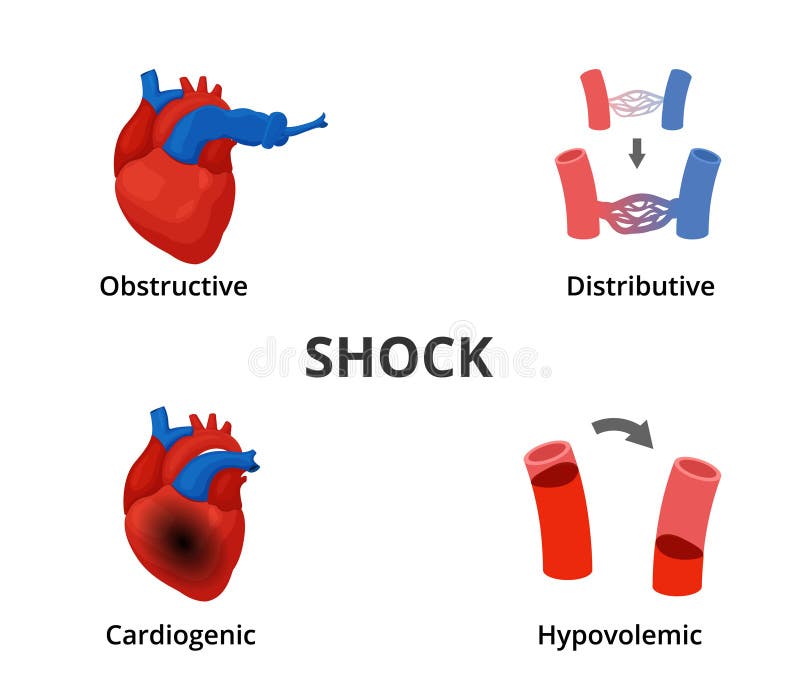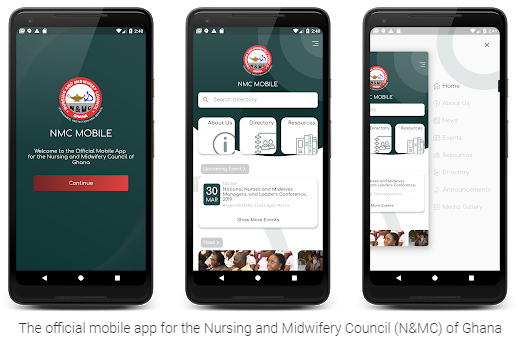On a fateful afternoon, your facility receives a call to an accident scene. Your job is to triage the victims of the accident, sending those who need urgent care first. During this time, you find a woman who's bitterly wailing for your help about a severe thigh pain. Just then you notice another victim who is lying by the road and seem to be sleeping. You try to wake her up but realize she's unconscious, having a weak and rapid pulse coupled with rapid and shallow breathing, and her skin feels cold as well. Between the two victims, whom would you assist first?
Shock is a medical emergency where organs and tissues of the body receives inadequate flow of blood. This deprives the organs and tissues of oxygen (carried in the blood) and allows the build-up of waste products. The most common cause of shock you may encounter is Hypovolaemic shock, which is results from severe blood loss. Shock can easily lead to death if the cause is not treated urgently.
Shock can also be defined as a state of inadequate tissue perfusion, which unless reversed, results in progressive organ dysfunction, damage and death. Progressively, when shock is left untreated, the following begin to occur; cellular death, organ failure, and whole body failure and death.
What is Perfusion?
It is the supply of oxygen to and removal of wastes from cells and tissues of body as a result of flow of blood through capillaries. The following organs of importance; brain, heart, and kidneys can suffer irreversible damage, eventually leading to death in an event of inadequate perfusion. Below is their tissue ischemic sensitivity:
Heart, brain, and lung: 4 -6 min
GI tract, liver, and kidney: 45-60 min
Muscles and skin: 2-3 hours
Classification of Shock
Shock can primary or secondary. Primary shock occurs immediately after the accident or sudden illness. Secondary shock occurs several hours after the accident or illness and is usually very serious and need urgent management/ treatment.
Signs and Symptoms of Shock
- The pulse may be rapid and weak.
- Breathing is rapid, sighing and shallow.
- The skin feels cold and clammy.
- Low blood pressure.
- The victim may feel dizzy or faint.
- The victim may have sunken eyes. Face and lips may look pale.
- The victim may complain of blurring of vision.
- The victim may vomit.
- In the later stages of shock, the patient becomes unconscious.
Type of Shock
Hypovolaemic Shock
This occurs when there is Loss/Reduction in actual circulating volume of blood from haemorrhage, Trauma, surgery or decreased amount of body fluid as a result of prolong vomiting and diarrhoea, heat exhaustion, Diabetic acidosis, Diabetes insipidus, excessive use of diuretics or Plasma loss as a result of Burns, Bowel obstruction, Liver disease etc.
Cardiogenic Shock
Cardiogenic shock occurs when the heart’s ability to contract and to pump blood is impaired and the supply of oxygen is inadequate for the heart and tissues, this may occur as a result of myocardial infection, pericardial tamponade, pulmonary embolism, tension pneumothorax etc.
Septic Shock
Septic shock is caused by widespread infection, usually with gram negative, antibiotic resistance. The bacterial produces toxins which affects the blood vessel wall thereby causing vasodilation leading to diminished tissue perfusion. This type of shock in commonly found in the hospital setting.
Neurogenic Shock
Neurogenic shock is the rarest type of shock. It is caused by trauma to the spinal cord resulting in the sudden loss of autonomic and motor reflexes below the injury level. Without stimulation by sympathetic nervous system the vessel walls relax uncontrolled, resulting in a sudden decrease in Systemic Vascular Resistance (SVR), leading to vasodilation and hypotension.
Anaphylactic Shock
This is caused by a severe allergic reaction to injection, ingestion or inhalation of foreign Substance.
The allergic reaction may lead to a loss of normal tone of the blood vessels, which will cause a state of abnormal dilatation of the blood vessel, causing inadequate perfusion of the cells. Agent that may commonly cause anaphylactic shock include insect sting, antibiotics, seafood, nut, and blood or other transfusion.
Psychogenic Shock
This type of shock arises because of psychological or emotional trauma.
Conditions susceptible to shock
- Severe Bleeding
- Heart Attacks
- Severe burns
- Severe Bacterial Infections
- Abdominal Emergencies
- Excessive Loss of Body Fluids
- Crush Injuries (Head)
First Aid Management of Shock
- Carry out primary assessment;
- Assess the airway, breathing pattern and circulation (ABC).
- Take away any harmful object or remove the victim from danger.
- Assess his level of response, send for help (or transport the patient to a hospital as soon as possible).
- Reassure the patient if the patient is conscious.
- Place the patient comfortably on his back except in cases of injury to the head, chest or abdomen.
- Lower the head slightly and turn to one side especially if the patient is vomiting.
- Do not cause the patient to sweat by using hot water bottles or thick blankets since this causes further loss of fluid from the body.
- Do not administer anything by mouth especially in cases
of injuries to the chest or abdomen, as an operation may be required soon.
Recognizing recovery from shock
- The pulse become slower and stronger.
- The skin feel warmer and regains colour.
- Respiration become slower and deeper.








0 Comments